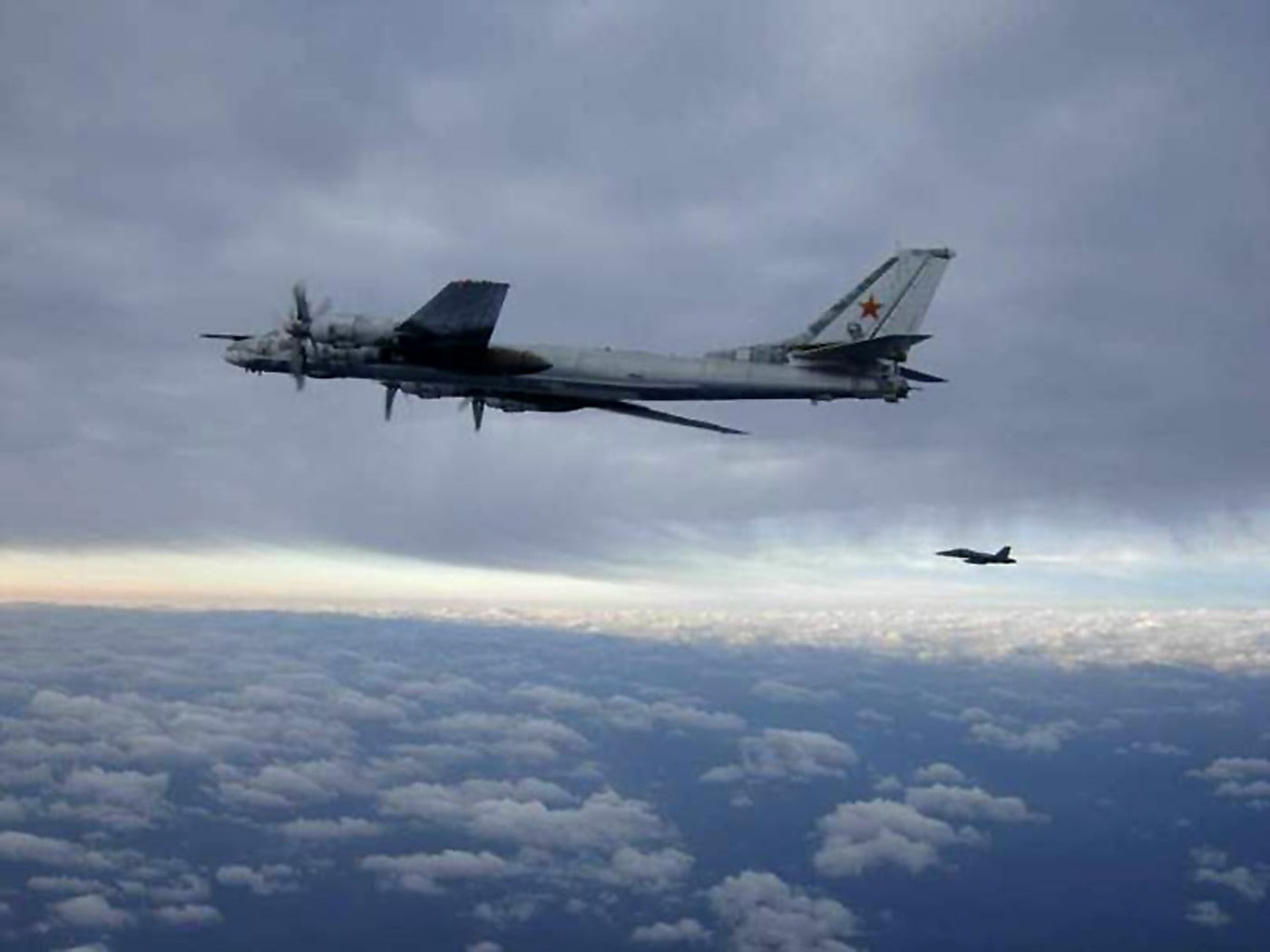On Aug. 8, Canadian and American fighter jets intercepted two Russian nuclear-capable bombers off the coast of Alaska, according to the North American Aerospace Defense Command.
The two Russian Tu-95 Bear bombers were identified and intercepted by two F-22 and two CF-18 fighters that were supported by an E-3 Sentry, a KC-135 and a C-130, NORAD tweeted in early August.
While alarming, NATO’s Supreme Allied Commander Europe and commander of U.S. European Command, U.S. Air Force Gen. Tod Wolters said unsafe intercepts between NATO and Russian aircraft have decreased over the past two years, and are in most cases safe.
When those intercepts are not safe, the NATO commander explained that its usually the result of a pilot who was “hot-dogging.”
“What I can assure this audience is that well over 99 percent of the intercepts that occur in the air are actually safe,” Wolters told audience members during the June 27 German Marshall Fund’s Brussels Forum.
“In many of the cases where they’re unsafe, when you take a look at the experience level of the operators that were involved, it typically turns into a young man or woman that was probably just hot-dogging it a little bit more than they should,” Wolters said at the forum.
Wolters said that NATO has tracked every intercept for the past four years, and that thousands of intercepts have occurred over international waters.
“On very rare occasion they are unsafe, and we’ve seen over the course of the last two years that the frequency of those unsafe intercepts has actually diminished tremendously,” Wolters said.
NATO officials would not provide the intercept data to Military Times, citing that the figures were not public or recorded centrally.
“NATO aircraft routinely intercept Russian military aircraft that fly close to our borders, which are not following international air safety norms — such as filing flight plans and communicating with air traffic control — or which are of interest to NATO,” a NATO official told Military Times.
But, Wolters said at the Brussels forum that “for every one intercept that a Russian aviator commits against a NATO aircraft, we actually have three NATO intercepts that are committed against a Russian aircraft.”
“When I say that we have 3 to 1, that gives you a little bit of a feel for the readiness disposition of your NATO force. It’s resilient and responsive,” Wolters told audience members in June.
On June 4, the U.S. Navy’s 6th Fleet said a Russian SU-35 conducted an unsafe intercept of a P-8A Poseidon over the Mediterranean Sea. The Russian aircraft conducted a “high speed pass directly in front” of the P-8, a news release detailed.
The P-8 reported turbulence from the intercept, and the Navy characterized the incident as “irresponsible,” according to the news release.
According to the Associated Press, a Russian Sukhoi Su-34 fighter briefly violated Estonia’s airspace on Monday.
The Russian fighter spent less than a minute in Estonia airspace near the Baltic Sea island of Vaindloo, according to AP.
AP reported that the plane’s transponder was switch off and that it was the second violation of Estonia’s airspace by Russia this year.
“Allies provide well-trained and experienced pilots for NATO missions. Our pilots act in a de-escalatory and defensive manner to avoid misunderstandings, accidents, and unsafe situations,” a NATO official told Military Times.
Shawn Snow is the senior reporter for Marine Corps Times and a Marine Corps veteran.





